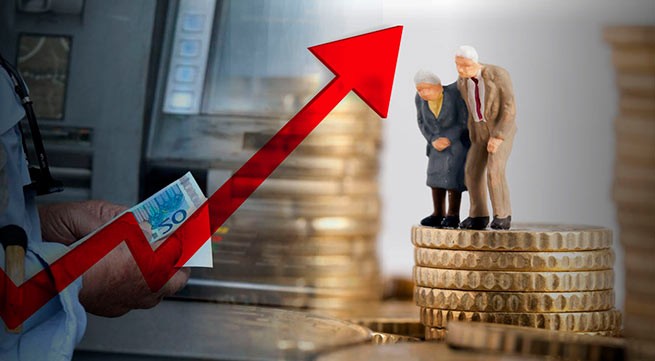Easter is fast approaching and, according to meat producers, orders for lamb and goat meat have already begun. However, this year, according to experts, in this field of activity, butchers in large urban centers, there is a significant shortage of lamb.
According to market participants, the deficit is mainly due to the fact that Catholics celebrated Easter this year a month earlier than in Greece. And since, in general, the import of lamb meat this year was limited, in the aggregate this all led to a large shortage of meat.
For the same reason, prices are expected to rise. However, in order to prevent the phenomenon of misappropriation of imported meat products of “Greek origin”, food quality control mechanisms are already on “alert”.
We will remind, as “Russian Athens” wrote earlier, experts asked about the number of sheep in Greece and the number of lambs that are born annually in the country. And they were called upon to give a clear answer.
Their opinion is published by tromaktiko.gr, citing the Meet the Lamb report:
85% of lambs and goats are raised in mountainous and unsuitable for agricultural areas of the country; 18% of Greece’s agricultural income comes from sheep and goat farms; 88.5% of domestic meat consumption falls on local lambs and goats (one of the highest indicators of meat self-sufficiency in the country); 10-12 million lambs and goats are born every year in Greece; 3.5 million of them, including imported ones, go to the slaughterhouse.
Greeks consume 4.5 kg of goat and sheep meat every year (EU average 0.9 kg). That being said, 18 kg was the annual consumption per person in Greece in 1980. Every euro that Greece receives from European funding for sheep and goat raising is converted into 0.60 euros. At the same time, in Italy, every euro is converted into 2.6 euros.
In addition, of the 84,000 shepherds registered in 2016, almost half are over 55, and only 5% -7% of the shepherds in Greece are young people, i.e. under 30 years of age.
Their opinion is published by tromaktiko.gr, citing the Meet the Lamb report:
85% of lambs and goats are raised in mountainous and unsuitable for agricultural areas of the country; 18% of Greece’s agricultural income comes from sheep and goat farms; 88.5% of domestic meat consumption falls on local lambs and goats (one of the highest indicators of meat self-sufficiency in the country); 10-12 million lambs and goats are born every year in Greece; 3.5 million of them, including imported ones, go to the slaughterhouse.
Greeks consume 4.5 kg of goat and sheep meat every year (EU average 0.9 kg). That being said, 18 kg was the annual consumption per person in Greece in 1980. Every euro that Greece receives from European funding for sheep and goat raising is converted into 0.60 euros. At the same time, in Italy, every euro is converted into 2.6 euros.
In addition, of the 84,000 shepherds registered in 2016, almost half are over 55, and only 5% -7% of the shepherds in Greece are young people, i.e. under 30 years of age.






More Stories
Greece must transfer the Patriot PAC-3 system to Ukraine with US “guarantees” against the Turkish threat
How will the confiscation of Russian assets affect the global financial system?
TikTok ban in the USA: Americans force the owner company to sell its assets